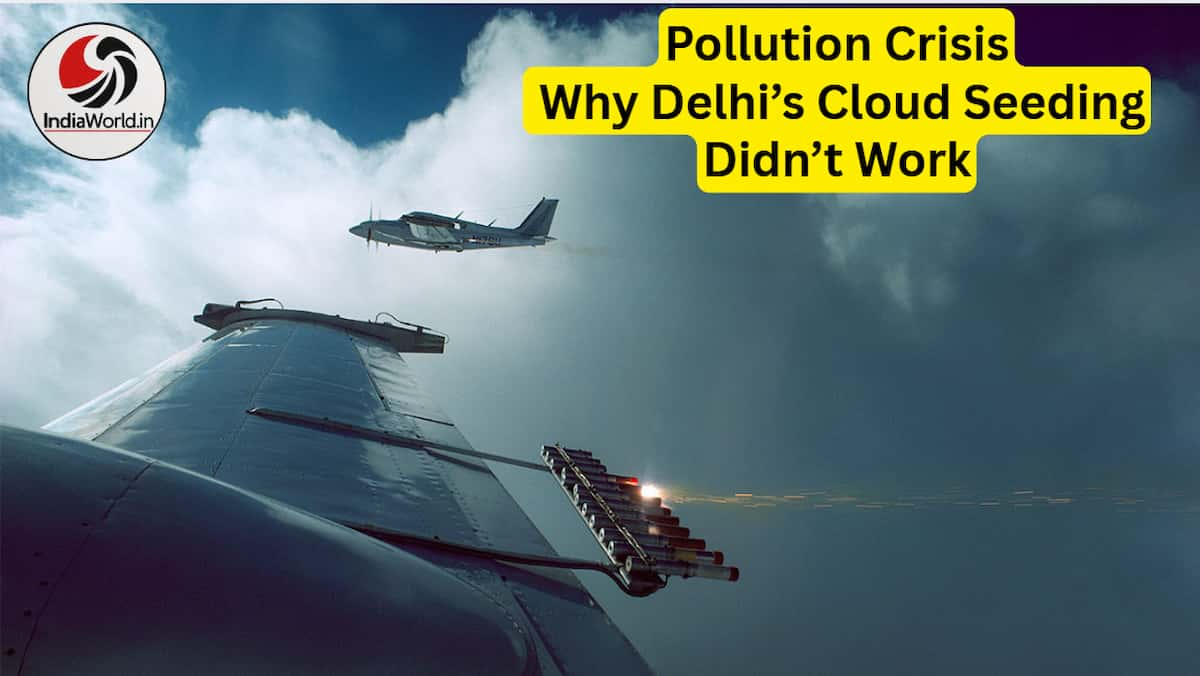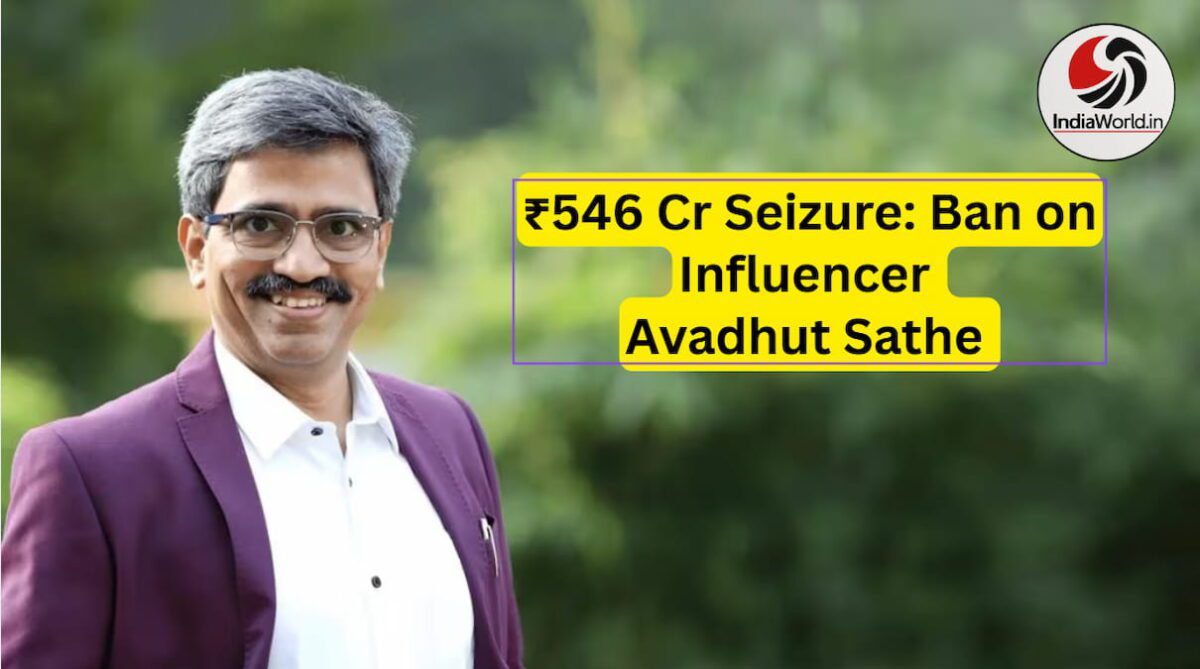Why Cloud Seeding Failed to Rain Over Delhi — What IIT Kanpur Revealed
Despite multiple trials, Delhi’s cloud seeding efforts didn’t yield rain due to low cloud moisture. Experts say it’s a short-term fix, not a pollution cure.. Delhi’s ambitious cloud seeding experiment, aimed at reducing toxic air pollution, has sparked intense debate among scientists, policymakers, and citizens. Despite high expectations, the trials conducted by IIT Kanpur in collaboration with the Delhi government failed to produce significant rainfall. The reason? Low atmospheric moisture and limited scientific backing.
Delhi’s Pollution Emergency and Cloud Seeding Trials
In late October 2025, Delhi’s air quality plunged into the “very poor” category, with PM 2.5 levels reaching 136 µg/m³ — nearly nine times the WHO’s safe limit. In response, the Delhi government launched a ₹3.2 crore cloud seeding initiative with IIT Kanpur, hoping artificial rain would wash away pollutants.
A Cessna aircraft took off from Kanpur, releasing flares containing silver iodide, rock salt, and common salt over northwest Delhi, including Burari, Mayur Vihar, and Karol Bagh. However, no substantial rain was recorded.

Why Cloud Seeding Didn’t Work in Delhi
According to IIT Kanpur Director Manindra Agarwal, the cloud moisture was only 15–20%, far below the ideal 50% required for successful seeding. Despite firing 14 flares, the clouds lacked the necessary conditions to trigger precipitation.
“It’s not a magic bullet. It’s an SOS solution for crisis situations,” Agarwal explained
Even though two minor precipitation events were recorded — 0.1 mm in Noida and 0.2 mm in Greater Noida — they were too small to make a meaningful impact.
Scientific Doubts and Global Comparisons
Experts from the Indian Institute of Tropical Meteorology (IITM), Pune, who conducted the world’s largest randomized cloud seeding trial (2018–2019), found only an average 18% increase in rainfall from seeded clouds However, they emphasized that cloud seeding’s impact on pollution remains unproven.
Globally, countries like China, South Korea, and Pakistan have experimented with cloud seeding, but results have been inconsistent and short-lived. Senior atmospheric physicist Madhavan Rajeevan warned:
“Even if rain is induced, its effect on pollution is temporary. The real solution lies in curbing pollution sources.”
Pollution Levels Before and After Seeding
According to the Delhi government’s report:
| Location | PM 2.5 Before | PM 2.5 After | PM 10 Before | PM 10 After |
|---|---|---|---|---|
| Mayur Vihar | 221 | 207 | 207 | 177 |
| Karol Bagh | 230 | 206 | 206 | 163 |
| Burari | 229 | 203 | 209 | 177 |
While these reductions are notable, experts caution that correlation doesn’t imply causation, and more rigorous studies are needed.
Sources: Mint Republic World DNA India
Future Trials and Cost Concerns
The Delhi government plans to continue trials when cloud cover improves. However, the cost of flying aircraft from Uttar Pradesh remains high. Agarwal noted that costs could be reduced with better logistical planning. Despite the setbacks, officials remain hopeful. “Even a little rain can offer temporary relief,” said Environment Minister Manjinder Singh Sirsa
🌧️ Frequently Asked Questions About Cloud Seeding in Delhi
❓ What is cloud seeding?
Cloud seeding is a weather modification technique used to artificially induce rainfall. It involves dispersing substances like silver iodide, sodium chloride, or potassium iodide into clouds to stimulate precipitation. The goal is to help with drought relief, improve water supply, or reduce air pollution.
❓ How does cloud seeding work?
Cloud seeding works by introducing particles into clouds that act as nuclei for water droplets to form. When these droplets grow large enough, they fall as rain. However, for this to work, the cloud must have enough moisture, the right temperature, and strong updrafts.
❓ Why did cloud seeding fail to bring rain in Delhi?
The recent cloud seeding trials in Delhi didn’t produce significant rain because the moisture content in the clouds was too low—only around 15–20%, while successful seeding typically requires at least 50%. Without enough moisture, the particles released by the aircraft couldn’t trigger rainfall.
❓ Who conducted the cloud seeding trials in Delhi?
The Delhi government partnered with IIT Kanpur to conduct the cloud seeding trials. A Cessna aircraft released flares containing a mix of silver iodide, rock salt, and common salt over areas like Mayur Vihar, Karol Bagh, and Burari.
❓ Did cloud seeding reduce pollution in Delhi?
According to a government report, there was a slight reduction in PM 2.5 and PM 10 levels in areas where cloud seeding was conducted. However, experts caution that the evidence is not conclusive and more rigorous studies are needed to confirm its effectiveness in reducing pollution.
❓ Is cloud seeding a long-term solution to air pollution?
No, cloud seeding is considered an emergency or SOS solution. It may offer temporary relief during high pollution episodes, but it’s not a substitute for long-term strategies like reducing emissions, improving public transport, and controlling industrial pollution.
❓ Has cloud seeding worked elsewhere in India?
Yes, India has conducted cloud seeding trials in states like Maharashtra and Karnataka. The Indian Institute of Tropical Meteorology (IITM), Pune, ran a large randomized trial between 2018 and 2019, which showed an average of 18% more rainfall in seeded clouds compared to non-seeded ones.
❓ Is cloud seeding used in other countries?
Yes, countries like China, South Korea, the UAE, and the United States have used cloud seeding for various purposes, including drought management and pollution control. However, global scientific consensus on its effectiveness remains mixed and largely short-term.
❓ What are the risks or limitations of cloud seeding?
Cloud seeding depends heavily on weather conditions. If clouds lack moisture or the atmosphere isn’t favorable, it won’t work. It’s also expensive and may not be environmentally sustainable if used frequently. Long-term impacts on ecosystems are still being studied.
❓ Will Delhi continue cloud seeding trials?
Yes, IIT Kanpur and the Delhi government plan to continue trials when cloud conditions improve. They hope to refine the technique and reduce costs by optimizing flight operations and seeding materials.








